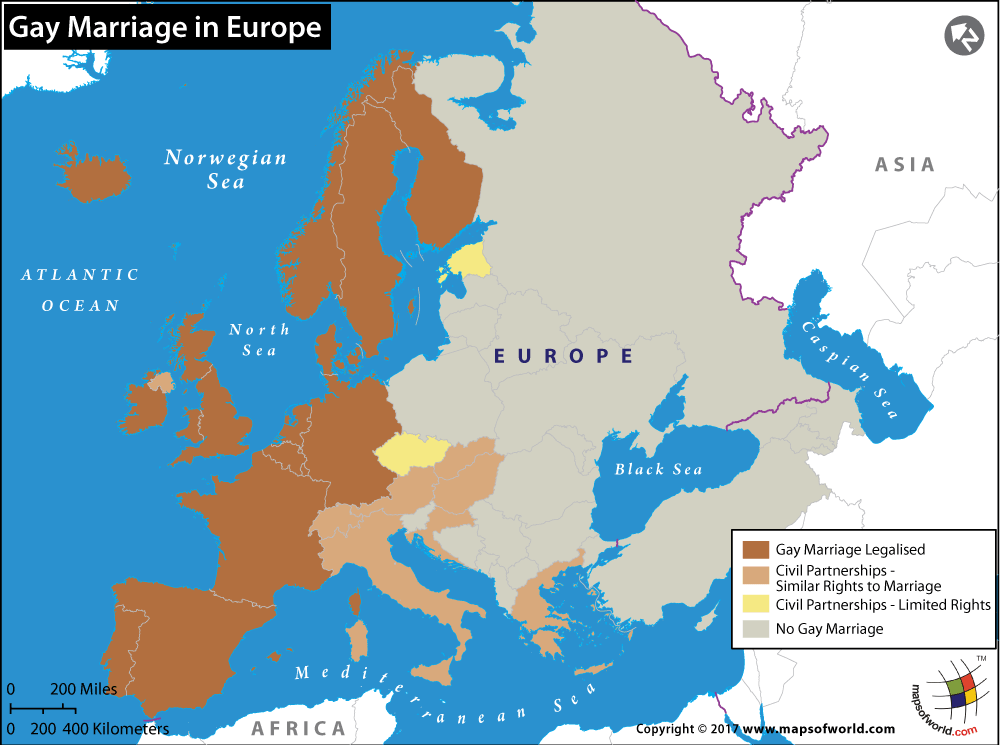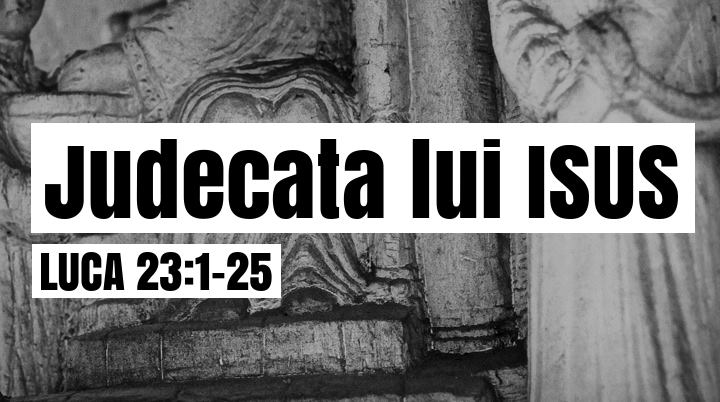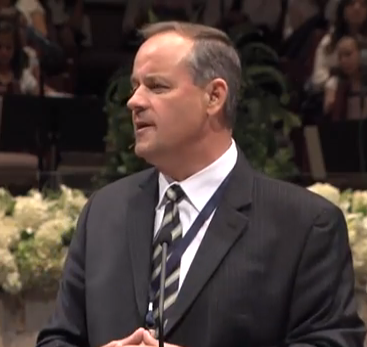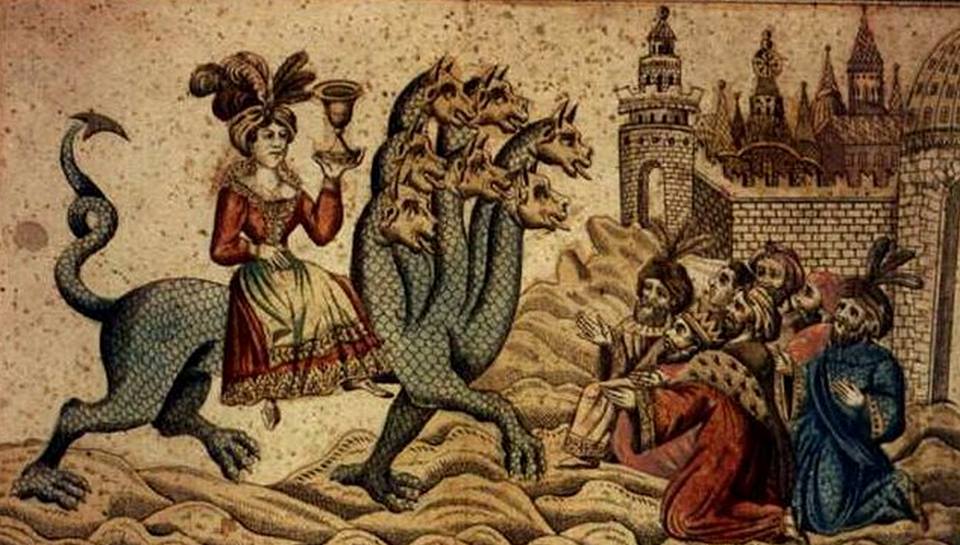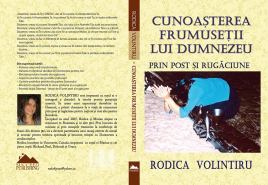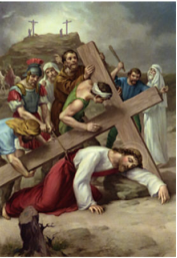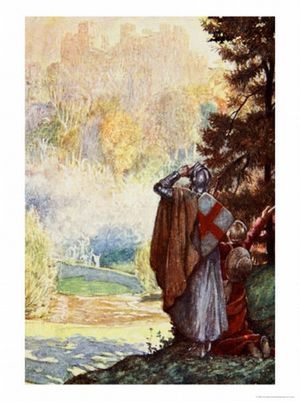 Photo credit www.bible-archeology.com
Photo credit www.bible-archeology.com
Article #1 Did the Romans invent Christmas?
From Historytoday.com – Matt Salusbury – DID THE ROMANS INVENT CHRISTMAS?
I am excerpting the article’s conclusion:
Gwynn concludes: ‘The majority of modern scholars would be reluctant to accept any close connection between the Saturnalia and the emergence of the Christian Christmas.’
Devout Christians will be reassured to learn that the date of Christmas may derive from concepts in Judaism that link the time of the deaths of prophets being linked to their conception or birth. From this, early ecclesiastical number-crunchers extrapolated that the nine months of Mary’s pregnancy following the Annunciation on March 25th would produce a December 25th date for the birth of Christ.
Read the entire article at Historytoday.com – DID THE ROMANS INVENT CHRISTMAS?
Article #2 Christmas Date set on Pagan Festival?
From bible-archaeology.com – Kevin McKinney – Christmas date set on pagan festival
Given the time of year I wanted to take time to make a brief post on the subject of Christmas. There are those who claim the date for Christmas was originally set to coincide with a pagan holiday. The Romans celebrated the Saturnalia festival in late December of each year. In 274 A.D. emperor Aurelian set the feast date for the birth of Sol Invictus, the Unconquered Sun, for December 25th. Many have advanced the claims the early Christian church set the date of Christ’s birth to coincide with this festival to attract the pagan worshipers. This theory is stated in a popular movie as simply being a fact, a well known fact universally accepted by scholars and others who are in the know of how early Christian traditions were established. Is this in fact the case, or is there more to the story?
It should be noted that in the early years of Christianity very little significance was placed on when Jesus was born. The focus for the early church was the passion, death and resurrection of Jesus. These dates were known and celebrated, which surprisingly ended up setting the date for Christmas. Early church leaders believed the birth and death of Jesus were tied together. Jesus came to earth to die for our sins and make it possible for us to achieve what it was impossible to achieve by the law. For this reason the conception and death of Jesus were believed to be so related that they happened on the same day of the year.
Using the Hebrew calendar it was determined Jesus had died on the 14th of Nisan, which is our modern day March 25th. Early Church leaders calculated that if Jesus was conceived on March 25th, and born nine months later, it meant Jesus was born on December 25th. In the eastern church they used the Greek calendar which placed the date of the crucifixion as April 6th. The eastern church held the same belief and used the same calculations as the western church and placed the date of Jesus’ birth nine months later, or January 6th. These two dates were used for centuries as the dates for Christmas. The time between these two dates came to be known as the twelve days of Christmas. It seems, based on the evidence and not the work of modern day fiction writers, the date for Christmas was set based on Good Friday and Easter, not a pagan holiday.
Article #3 Is Christmas really a pagan holiday?
Read selected notes which I have transcribed below or watch the entire video (70 minutes) at the bottom of this article.
Lenny Esposito , theologian and apologete answers the question:
- The answer to this question could lead to eternal destinies. Esposito recounts the story of a 16 year old young man who was told by Jehovah’s Witnesses that the christian church ‘cannot’ be worshipping God in spirit and truth because of all of the pagan paraphernalia used in the Christmas celebration, and that Jesus could not have been born December 25th because shepherds could not have been out in the field in December. The youth turned Jehovah’s Witness based on this information; as the JW promised that if he joined them he will know the truth, because JW only rely on the Word of God.
- Atheists are also claiming that Christmas is a pagan holiday that started way before Christ was born. Esposito answers the questions: Is this true? What is the story? He points out that symbols could mean what ever someone would have them mean. Here, he points to the example of the swastika. Esposito says, „The swastika actually has roots that go back thousands of years. The Chinese have been using it as a symbol for good luck and it is incorporated into Chinese art. But, if you paint a swastika on a park bench, or if you put it on your front door, even if you’re Chinese and are hoping for good luck; I’m guaranteeing you, your neighbors are not going to react well, because the culture understands that symbol that means something different than what you’re trying to envision. And the problem you’re going to have is that you won’t be able to communicate that in any other way.” Then he makes his point, „Does a Christmas tree mean that I love pagans, now? No, we’re Christian. But, that’s not necessarily the best answer:
Is Christmas really just a repackaging of the Roman feasts? There are 2 feasts in Rome that are usually offered as primary candidates for the basis of Christmas being on Decemeber 25th: Saturnalia, which is the festival of the god Saturn, who is kind of the god of time, god of harvest, and then the Sol Invictus. Actually, the feast name is Deus Natales del Sol Invictus- the birthday of the unconquerable sun, the idea that the sun cannot die. This is tied into the idea of the sun decreasing in the Northern hemisphere and then increasing again after the solstice.
- So, let’s take them in order: Saturnalia- the worship of Saturn. Wikipedia says that ‘Saturnalia was an ancient Roman festival in honor of the deity Saturn, held on December 17th of the Julian calendar, and later expanded with festivities through December 23rd. The holiday was celebrated with a sacrifice to the temple of Saturn in the Roman forum. And a public banquet followed by private gift giving, continual partying and a carnival atmosphere that overturned Roman social norms. Gambling was permitted and masters provided table service for their slaves. The poet Catalus called it ‘The best of days’. The popularity of Saturnalia continued into the 3rd and 4th centuries A.D., and as the Roman empire came under the Christian rule, some of its customs may have influenced the seasonal celebrations surrounding Christmas and New Year.’ So, there’s your first clue, that even Wikipedia is saying, „Saturnalia was an influence to Christmas.” December 17- December 23, revelry, nonstop partying… That’s Saturnalia; that’s the one that is most well known of the two.
- The other one is a single day holiday- Sol Invictus. Again, the Sol Invictus was the sun god, the unconquerable god and this is tied more to astrology and the winter solstice, because the winter solstice happens on Dec. 21st. It’s the shortest day of the year in the Northern hemisphere. That’s the time when we have the least amount of sunlight. What does that mean? Well, you tilt the earth on its axis and you have a fixed light point, and at one point, more of the sunlight hits the top part of the earth than the bottom. That’s summer. It heats up, days get longer. When it’s on the other side, more light hits the Southern hemisphere. In the Northern hemisphere the days grow shorter, and it’s colder. That’s why we have summer and winter, because of the 22 degree offset of the earth’s axis. So, December 21st marks the very shortest time of light, and it’s also when the sun is at the lowest on the horizon at noon time. And then as we enter into spring, through winter, you get the sun going higher until the summer solstice, when we have the longest day of the year, and so on. Given this, the Romans wanted to celebrate the unconquerable sun , that the sun could not die, and it would never sink away into oblivion. Aurelian is the emperor that actually started this and it’s a later holiday in the Roman tradition. The official sun god was the patron of soldiers, who of course needed to do their fighting during the daylight hours. And in 274 A.D. Aurelian made Sol Invictus an official cult; in other words there was an official religion of the empire, alongside the other Roman cults. And then by 375 A.D. he decides to declare a holiday, the birthday of the unconquerable sun, which is supposedly celebrated on Dec. 25th. This happens in the 370’s to 380’s A.D.
By 400’s A.D. or so, the Christians are aware of this stuff. Augustine, who is one of the church fathers had a Christmas sermon that he was preaching and he said, „Let us,” meaning the Christians, „celebrate this as a feast, not for the sake of this sun (sun in the sky) which is beheld by believers, as much as by ourselves, but for the sake of Him who created the sun.” This shows that Augustine was aware that there was this kind of competing holiday idea. Although the pagan holiday was celebrated in only a few places, it wasn’t widespread, but he knew about it, and he knew that because of the Roman calendar, it would move a little bit and it may land during Christmas. But, it’s interesting that he pulls those two things together.
The best thing you can do when you’re reading this kind of stuff is to say, „Who says so?” Let’s look at it from a historian’s perspective and maybe we can find some truth in here. When we start looking at Sol Invictus and Saturnalia, one of the things we find out is that the celebration accounts that are recorded really don’t fit. First of all, and before we really go into this, I am going to give you a really brief Roman calendar lesson. It’s not gonna be hard, it should’ the too scary. But you need to know this because this is how all these holidays are referred to. The Roman calendar, the Julian calendar that Julius Caesar started is not quite the calendar that we have today. We have the Gregorian calendar. The Julian calendar had 4 months that were 32 days long- March, May, July, and October, 31 days. Then they had short months, and that was 29 day months. So it wasn’t 30 and 31. It was 30 and 29. And that was January, April, June, August, September, November and December. And then they had February which was an accordion month. It could be 29 days, it could be 24 daysThey would use it to kind of fill up the gaps because we know that it’s 365 1/4 days, so we have leap year. We do the same thing. Once every four years we stick a day in February.
Initially, in this process, they would begin a month, traditionally, in a new moon. When the Julian calendar takes effect, that tradition fades away. But the names persisted. So the first day of ever month is called the calends. The calends of the month meant the first of the month. We get the english word ‘calendar’ from it. The middle of the month, and again, this was based on lunar cycles, was called the ides of the month. Anybody familiar with Shakespeare and Julius Caesar’s ‘Beware the ides of March?’ On a long month, March happens to be a long month, it happens to hit on the 15th. In a short month, that would be the 13th. So the ides would move based on the length of the month, but the ides is the middle of the month. And then you have the ‘nones’, which falls between the ides and the calends. So it’s kind of the halfway point between the ides and the next calends coming up. Again, because the months change in length, that nones could be moving around. But this was the basic framework. So, we do the same things. We’ve got the 1st and the 15th; those are the paydays. Roman army- same thing. The ides and the calends, those are the important dates.
Why is this important? Because when the guys are writing about the festivals, they’re talking about the festivals in reference to the calends, in reference to the 1st of the month. So when we start looking at Saturnalia, and we start researching where Saturnalia was, it was one day initially. It was 14 days before the calends. So, December being a short month, that puts December 15th as the day of Saturnalia’s celebration. Now Dec. 15th isn’t Dec. 25th by any stretch of the imagination. So that causes me a problem, saying, „How can this be in competition?” So, if Saturnalia is starting on the 15th, how could that be influencing Christmas which is on the 25th? It doesn’t make sense to me. Later, a new festival extended the celebration to complete 7 full days, but the festival would still end on the 10th of 9th day before the calends of January, which still falls short of the December 25th date. And as we saw here, even Wikipedia gets the dates right, December 17th, 16th, and lasting 5-7 days, you get December 23rd. It’s still not Dec. 25th.
Saturnalia doesn’t fit calendar wise or customs wise
So, Saturnalia doesn’t fit in terms of the calendar positioning. But, Saturnalia doesn’t fit in terms of the customs of the people, the way they celebrated the holiday, either. And it was really interesting. Basically, Saturnalia is kind of like a Sadie Hawkins of Rome. It’s kind of like a anti tradition, anti culture day. It’s a bizarro day. You do the things backwards. What do I mean by that? Well, Roman society was very formal, and the Roman togas were the proper attire. But, on these days, you ditched the Roman togas, you wore a more casual Greek garb. Imagine having to go into work wearing a suit and tie every day and this like, now, come in in your jambes (pajamas). It’s that kind of a feel. And with Roman societies that was like, ‘Wow, you just never do that.’ Again, gambling was very frowned upon, Romans were very disciplined. It was all about work, and order, and progression. Gambling and other vices were permitted and encouraged. So, rather than saying ‘Gambling is wrong,’ ‘No, gambling is right…’ Slaves would take the roles of masters and sit at the banquet table and be fed. And masters would most probably not be the ones sitting in the salves’ quarters, they would never go that fra. But, they would sit at the table with the slaves, which again was kind of unheard of. Some people, the masters, would even serve the slaves. So, it’s an upside down holiday, if you will.
Gifts were given, some trinkets, sometimes gag gifts were given, but the idea behind the whole thing was they were reversing the social norms. The master never gives a slave a gift. It’s the slave’s duty to give the master a gift. So, everything was flipped upside down. This is what Saturnalia was all about. There was a sacrifice, so where’s the Christmas tree in this? There’s gifts, but let’s face it, every time you’re gonna get people together, you’re gonna get gifts. You got married, what do you have to bring? A gift. Moved into a new house. What do you have to bring? Kid graduated high school. What do you have to bring? The fact that gifts are associated with a festival, it’s a nonstarter.
I don’t see the connection here. If these ancient pagans were celebrating Christmas before Christians, how are these connected at all? Could it be that this holiday just happened to be on Dec. 25th? Why would the Christians choose this?
What about Sol Invictus?
It’s interesting in Sol Invictus, when you read about it, there is no evidence that Aurelian instituted this celebration of Sol, the sun, on December 25th, originally. When he proclaimed the new religion ‘We will worship the sun god’, it’s not mentioned until 80 years later. It’s not until 354 A.D. and 362 by Julian, in his oration to King Helios, that they talk about Sol Invictus now beginning on Dec. 25th. Now, why is that important? Why is it that by the mid 4th century, that date important? I’ll get to that in a minute. It’s interesting that the chronography of 354, the same time that they start mentioning Sol Invictus on Dec. 25th, talks about Christmas, talks about Christmas being on December 25th. So, maybe the pagans claimed their holiday in order to match the Christian holiday. Again, I point you to Halloween, it wouldn’t be the only time in history where that happened (Halloween used to be the holiday for the Eve before All Saints Day, but Christians stopped celebrating it after pagans started celebrating it). Most people, if you’re talking about the winter solstice, those guys in the ancient world were pretty darn good at astronomy. I mean, look at Stonehenge, look at the timekeeping that thing took. They would notice the difference between a Dec. 21st winter solstice and a December 25th celebration. That’s a big difference.
Of course, you hear the whole idea of celebrating the Son of God instead of the sun god. I’ve heard atheist throw this out. Let me just caution you guys. They didn’t speak english in ancient Rome. I remember I was working on a project for somebody once, and they were creating a Spanish website for Christian books. And they were basically gonna call it ‘Sunflower Books’. One of the things that they said is, ‘You can’t use the pun of SUNflower and SON of God because in Spanish it just doesn’t work. They are 2 different words. Similarly, the Latin for the sun that we see in the sky is sol- solstice, solar year. The latin for the Son of God is filius. So the pun doesn’t even work, it doesn’t make sense, only if you are naive. And this is what I find, atheists tend to do one of two things:
- They either tend to assume that the ancients knew absolutely nothing. Oh, December 21st, December 25th- it’s close enough. You know, they weren’t as smart as we were.
- Or, they assume that the ancients were exactly like us. Oh yeah, Son of God- sun worship, it’s all the same. They make this mistake in both sides of life.
Now, when we start looking at Christmas, though, we’ve got to say, „Wait a minute, how early did we start celebrating Christmas in December? T.C. Schmitt out of Yale University is doing a lot of primary source work. He’s done a lot of research work in this. He’s a translator. He’s getting his pHd. He reads latin and he’s translating commentaries from Latin and things like that. So, he’s looking at the primary sources. And what we’re finding out is the Christians were celebrating Christmas well before Christianity was allowed to be out in the open in the Roman empire, as early as A.D. 200, Christmas was already established in the empire.
Clement of Alexandria, one of the early church fathers, wrote somewhere between the 190’s and 210’s. He wrote a book called the Stromata. And he calculates a date for Jesus birth. And he says, ‘From the birth of Christ, therefore to the death of Comotis (a Roman ruler) are 194 years, one moth, 13 days.” Pretty precise. „And there are those who determine, not only the year of our Savior’s genesis, but even the day, which they say took place in the 28th year of Augustus, on the 25th of December.” In this outlet, he’s pretty specific to place the birth of Christ right at December 25th. This is A.D. 200 or so, Clement of Alexandria, a church father who came from pagan roots, so he shunned pagan rituals and it’s highly unlikely that he would choose a pagan date himself.
But, he’s not alone. There’s another guy, Hippolytus of Rome, writing somewhere in the early 200’s as well. In his commentary on Daniel he mentions Bethlehem. And he says, ‘For the first advent of our Lord in flesh, when He was born in Bethlehem was December 25th, a Wednesday, while Augustus was in his 42nd year, from Adam, 5,500 years. He suffered in the 33rd year, March 25th, Friday, the 1th year of Tiberius Caesar, while Rufus and Rubion were counsels. There’s about 7 different manuscripts of this commentary by Hippolytus of Rome floating around. Because we don’t have the original, some people have debated that maybe that 25th date, maybe somebody stuck 12/25 in there, maybe they added it. Well, of the 7 manuscripts, 5 contain December 25th, one mentions no dates and one mentions two, December and March. And here’s the interesting thing. With all of the talk about the winter solstice and Christians trying to convert the pagans, what it looks like and what modern scholarship is finding is that Christianity had absolutely no interest in changing their festivals and making their festivals in order to attract the pagans. It looks like the Dec. 25th date comes from a tradition from within Christianity itself. It’s got very Christian origins.
Now, let me give you the reason why. You’ll notice, both in the Clement and in the Hippolytus quote they talk about Jesus’ passion, His death, His crucifixion. Why is that important when we talk about Christmas? Well, we know. We never forget the cross. This is why He came. Jesus is the reason for the season. Well, it seems like the early Christians held that same view. And, what the Christians held was an even more ancient Hebrew tradition. That a major prophet, he would have either his birth or his conception land on the very same day as his death. They believed in symmetry. So they held that Jesus was the greatest of all that God could send to us. Therefore, his birth would be a significant date. And so, they wanted to tie that into His death. In the Stromata, Clement of Alexandria talks about our Savior’s genesis. That genesis doesn’t only mean birth, it could mean conception. From the Christian viewpoint, the ministry starts at the point of conception, because God calls you from the womb. So, if Christ’s conception lines up with Christ’s death, and they’re using the March 25th, A.D. 30, the point of passover of Jesus’ crucifixion death, that means his conception is on March 25th. Guess what 9 months after March 25th lands on? December 25th.
This isn’t only a tradition within christendom, there were some Jews who would hold that same idea. Thomas Talley, in the Origins of the Liturgical Year, writes, ‘Around 200 A.D., Tertullian has reported that the calculation of the 14th of Nisan (which is the day of the crucifixion), was March 25th.’ Now, it was later recognized that the feast of annunciation, when Gabriel encounters Mary, the commemoration of Jesus’ conception would be March 25th, plus nine months, then you move it to Christmas. Augustin was familiar with this association as well. He writes, ‘For Jesus, it is believed that He was conceived on the 25th of March, upon which day He also suffered. As a matter of fact, the Christians went one step further. They would say that the actual creation day of the universe is also March 25th. If you were to go backwards, count all the way to the beginning, March 25th is the most significant date in history because that’s when the beginning of the world was and that’s when Jesus would start the new beginning to come back into the world, and that’s when the new life, through His death and resurrection would start as well. And that’s what we have.
So, we’ve got the Biblical Archaeological Society writing that Christian authors of the time, do note a connection between the solstice and Jesus’ birth. Ambrose, the church father, for example, describes Christ as the true sun who outshone fallen gods of the old order. But early Christian writers never hint at any recent calendar engineering. They clearly don’t think that the date was chosen by the church. Rather, they see the coincidence as providence, a providential sign. As natural proof that God has selected Jesus to be above, and over. Basically, ‘you’re going to give me a false copy, but the real one stand-in its place.’ The first mention of a date for Christmas in about A.D. 200, and the earliest celebrations we know about Christmas form 230 to 300, come in a period when Christians were not borrowing heavy from pagan traditions. They wouldn’t do that; they were being persecuted, especially around 300 A.D. with the persecution of Diocletian.
So, it’s interesting that this is what we find. That perhaps, it has nothing to do with the winter solstice, that’s just a coincidence of time that it happens around the same time of year. But, the Christians were more precise than that. They said, we know when Jesus died, we count 9 months and that’s when Jesus was born, because He had to have been conceived at the same point when He died. This means that December 25th has its roots in Christianity. It doesn’t have its roots in any pagan traditions. The December 25th date came from within the church, based on church understanding of the time, and therefore is in no way, shape or form corrupt as a pagan process. Tom Schmitt summarizes, „A feast of Sol Invictus did occur on December 25th, but the earliest evidence for it dates to the middle or late 4th century. About 200 years after Christmas has been established. There’s no evidence that emperor Aurelian established a festival of Sol Invictus or anyone else on December 25th. 43:00




































